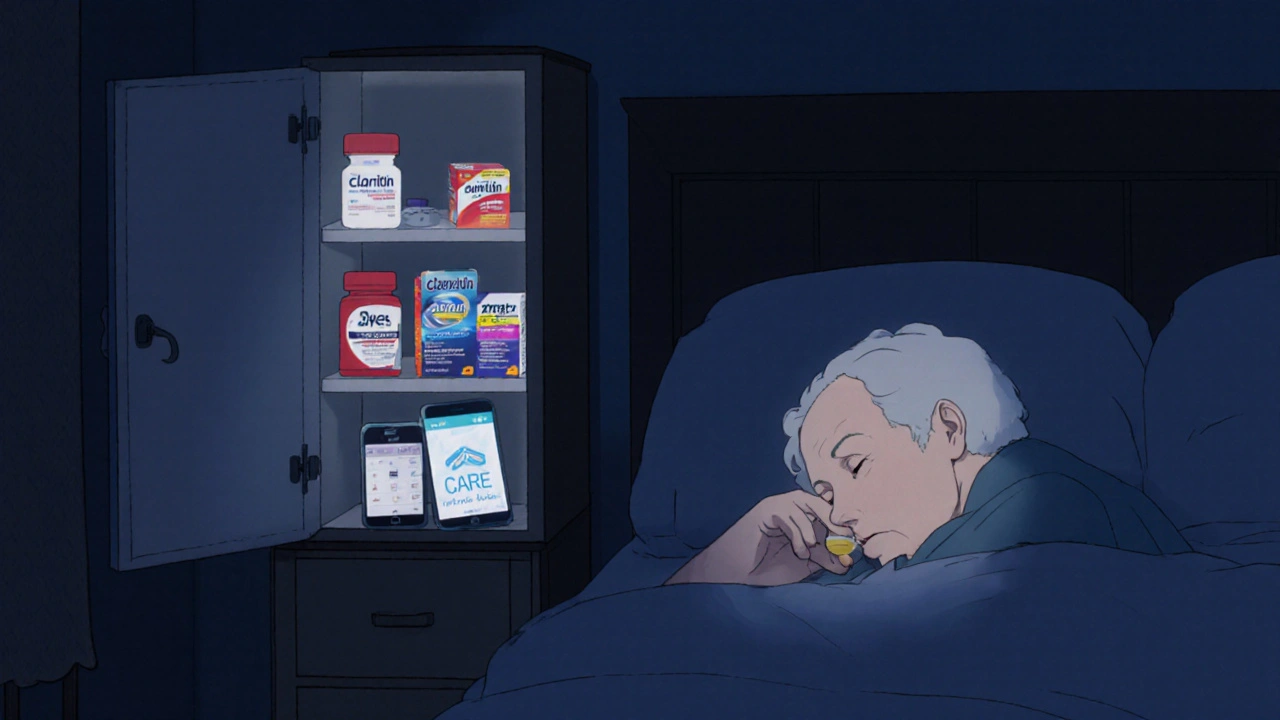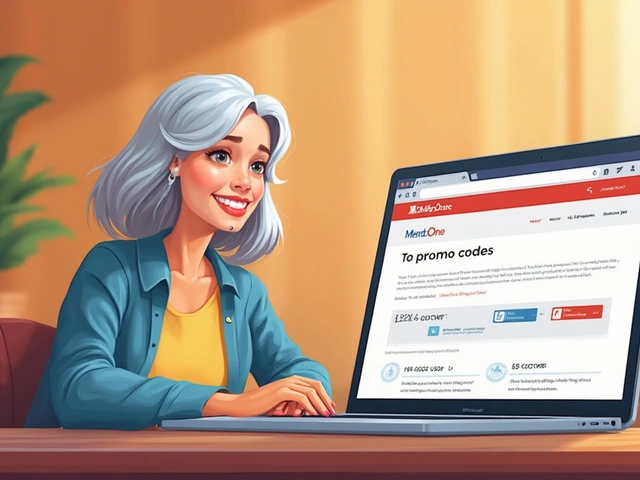Every year, Americans spend over $120 billion on over-the-counter (OTC) medications. That’s more than half of all the drugs people take-without a doctor’s prescription. And yet, many don’t know the real differences between the pills they grab off the shelf. NSAIDs, acetaminophen, and antihistamines are the most common OTC drugs out there. But using them wrong can land you in the emergency room.
What Are NSAIDs, and When Should You Use Them?
NSAIDs-nonsteroidal anti-inflammatory drugs-are the go-to for pain, swelling, and fever. Common names you’ll see on the bottle: ibuprofen (Advil, Motrin IB), naproxen (Aleve), and aspirin. These drugs work by blocking enzymes called COX-1 and COX-2, which cause inflammation and pain signals in your body.
They’re great for sprained ankles, arthritis flare-ups, or menstrual cramps. A 2021 meta-analysis found ibuprofen is about 50% more effective than acetaminophen for inflammatory pain. If your knee hurts because you twisted it playing basketball, NSAIDs are your best bet.
But here’s the catch: regular use raises your risk of stomach bleeding by 2.5 times. People with ulcers, kidney problems, or heart disease should avoid them. And if you have asthma, about 1 in 5 of you could have a dangerous reaction. That’s why some pharmacies keep NSAIDs behind the counter-so you can talk to a pharmacist first.
OTC ibuprofen comes in 200mg tablets. The max daily dose is 1,200mg (six pills). Don’t be fooled by "extra strength" labels-those still cap at 200mg per tablet. Topical gels like Voltaren Arthritis Pain (1% diclofenac) work locally and are safer for long-term joint pain, with less risk to your stomach.
Acetaminophen: The Quiet Pain Reliever
If NSAIDs upset your stomach or you can’t take them, acetaminophen (Tylenol) is the alternative. It’s been around since 1955 and is the most popular pain reliever in the U.S., with 72% of headache sufferers choosing it.
Unlike NSAIDs, acetaminophen doesn’t reduce swelling. It works mostly in the brain to lower pain and fever. That makes it safer for people with bleeding disorders, kidney disease, or those on blood thinners. It’s also the top choice for seniors-68% of people over 65 prefer it because it doesn’t increase fall risk like NSAIDs can.
But acetaminophen has a dark side: liver damage. The official max daily dose is 4,000mg, but many experts now recommend staying under 3,000mg. Why? Because 56,000 emergency room visits each year are due to accidental overdose. And it’s easy to overdose-many cold medicines, sleep aids, and combo pills contain acetaminophen. You might take two Tylenol for a headache, then a NyQuil for a cold, and suddenly hit 3,000mg before noon.
Look for "APAP" on ingredient lists-that’s acetaminophen. The FDA now requires all liquid forms to be 160mg per 5mL to prevent dosing mistakes. Still, 20% of pediatric overdoses happen because parents confuse teaspoons with tablespoons. Always use the measuring cup that comes with the bottle. Never guess.
Antihistamines: Allergy Relief, With a Catch
Antihistamines fight allergies by blocking histamine, the chemical your body releases when exposed to pollen, dust, or pet dander. They come in two generations, and the difference matters.
First-generation antihistamines like diphenhydramine (Benadryl) and chlorpheniramine work fast-within 15 to 30 minutes. But they cross into your brain. Half of users report extreme drowsiness. That’s why you shouldn’t drive after taking Benadryl. In fact, a 2021 JAMA study found older adults who take these are 50% more likely to fall. They also cause dry mouth, blurred vision, and confusion.
Second-generation antihistamines like loratadine (Claritin), cetirizine (Zyrtec), and fexofenadine (Allegra) were designed to avoid the brain. They cause drowsiness in only 8% of users. But they take longer to kick in-1 to 3 hours. Still, they last 24 hours. That’s why Claritin dominates the allergy market with 41% share.
Not everyone responds the same. One person might swear by Zyrtec, while their friend gets zero relief. Why? Genetic differences in histamine receptors. If one antihistamine doesn’t work, try another. It’s not about being "allergic to medicine"-it’s about your body’s chemistry.
Don’t use antihistamines as sleep aids. Diphenhydramine might knock you out, but it disrupts deep sleep cycles. Long-term use in older adults is linked to higher dementia risk. Use them only for allergies, and only when needed.

How to Choose the Right One
Here’s a simple guide:
- Need relief for swelling, joint pain, or menstrual cramps? → NSAID (ibuprofen or naproxen)
- Have a headache, fever, or sensitive stomach? → Acetaminophen
- Have runny nose, itchy eyes, or sneezing? → Second-gen antihistamine (loratadine, fexofenadine)
Don’t mix them unless you know what you’re doing. Many combo cold meds contain both acetaminophen and an antihistamine. Taking extra Tylenol on top of that? You’re at risk.
Also, check expiration dates. Old antihistamines lose potency. Expired NSAIDs might not work at all. And never take aspirin if you’re under 18-it’s linked to Reye’s syndrome, a rare but deadly condition.
What Pharmacists Want You to Know
Pharmacists see the mistakes every day. People take two Advil, then a cold pill with ibuprofen. They crush pills to make them easier to swallow. They give kids adult doses because "they’re big for their age." Dr. Adam Singh, a retail pharmacist, says: "Most people don’t realize OTC doesn’t mean harmless. It means you’re responsible for your own safety." Here’s what you should do every time you buy an OTC med:
- Read the Drug Facts label. It’s not just filler-it’s the law.
- Check for duplicate ingredients. If you’re taking three products, make sure none have the same active ingredient.
- Use the measuring tool that comes with liquids. No spoons.
- Ask the pharmacist: "Is this safe with my other meds?" They’re trained to catch interactions.
- If you’re over 65, pregnant, or have chronic conditions, don’t guess. Talk to someone.
Even "safe" drugs can be dangerous in the wrong hands. The FDA estimates 23% of OTC users accidentally exceed daily limits. That’s more than 1 in 5 people.

What’s Changing in 2025?
The FDA is considering lowering the maximum daily acetaminophen dose from 4,000mg to 3,250mg. Why? Because liver damage is still rising, even with warnings.
Topical NSAIDs are getting stronger. A 3% diclofenac gel is now available OTC for arthritis-more potent than the old 1% version. And there’s talk of making low-dose statins (like atorvastatin) available without a prescription, following the success of Prilosec OTC.
Meanwhile, digital tools are helping. Apps like Walgreens’ "Find Care" ask you to type in your symptoms and recommend the right OTC product. Beta users report 82% satisfaction. But don’t rely on apps alone. Use them as a starting point, not a replacement for advice.
Final Thoughts: OTC Doesn’t Mean Risk-Free
Over-the-counter doesn’t mean "no consequences." These are real drugs with real side effects. What makes them "OTC" is that, when used correctly, they’re safe for most people most of the time.
But safety isn’t automatic. It comes from knowing what you’re taking, how much, and why. It comes from reading labels. It comes from asking questions.
Next time you reach for that bottle, pause. Ask yourself: Is this the right drug for my symptom? Am I taking too much? Could this interact with something else? The answer might save you a trip to the ER-or worse.
Can I take NSAIDs and acetaminophen together?
Yes, if you need stronger pain relief and your doctor approves. Many people combine ibuprofen and acetaminophen for migraines or post-surgery pain. But don’t do it long-term without medical advice. Stick to the lowest effective dose of each, and never exceed the daily max for either. Always check other meds you’re taking-some cold and flu products already contain both.
Is one brand of acetaminophen safer than another?
No. Tylenol, CVS Health, Equate, and store brands all contain the same active ingredient: acetaminophen. The only differences are price, inactive ingredients (like dyes or fillers), and packaging. Some people react to dyes or gluten in generics, so check the label if you have allergies. But the drug itself is identical.
Why do some antihistamines make me sleepy and others don’t?
It’s about how the drug moves through your body. First-gen antihistamines like diphenhydramine easily cross the blood-brain barrier, causing drowsiness. Second-gen ones like loratadine and fexofenadine are designed to stay out of your brain. That’s why Claritin won’t knock you out-but Benadryl might. Your genetics also play a role: some people metabolize these drugs faster or slower, which affects side effects.
Can I give my child adult OTC medicine if I cut the dose?
Never. Children’s bodies process drugs differently. Adult formulations often contain inactive ingredients that aren’t safe for kids. Always use a product labeled for children and follow the weight-based dosing chart on the label. If you’re unsure, call your pediatrician or pharmacist. A wrong dose can cause liver failure or seizures.
What should I do if I think I took too much acetaminophen?
Call Poison Control at 1-800-222-1222 immediately. Don’t wait for symptoms. Liver damage from acetaminophen can start without pain or nausea. The antidote, N-acetylcysteine, works best if given within 8 hours. Even if you feel fine, get help. It’s better to be safe than sorry.
Are OTC pain relievers safe for long-term use?
NSAIDs aren’t meant for daily, long-term use. Regular use increases your risk of stomach ulcers, kidney damage, and heart problems. Acetaminophen is safer for daily use, but only if you stay under 3,000mg per day. If you need pain relief every day, see a doctor. There may be an underlying condition that needs treatment-not just masking with pills.
Do OTC meds work as well as prescription ones?
For most common issues-headaches, allergies, minor aches-yes. The active ingredient in OTC ibuprofen is the same as in prescription versions. The difference is usually in dosage. For example, prescription ibuprofen can be 800mg per pill; OTC is capped at 200mg. But if you take three OTC pills, you’re getting the same amount. The real difference comes with complex conditions like severe arthritis or chronic pain, where doctors prescribe stronger or combination therapies.
Next Steps: How to Use OTC Medications Safely
- Keep a written list of all OTC meds you take, including doses and reasons.
- Store all medications out of reach of children and pets.
- Use one pharmacy for all your prescriptions and OTC buys-it helps them spot dangerous combinations.
- When in doubt, ask a pharmacist. They’re not just cashiers-they’re trained medication experts.
- Set phone reminders if you take meds daily. It’s easy to lose track.
- Dispose of expired or unused meds properly. Don’t flush them. Use a drug take-back program or pharmacy drop-off.
OTC medications are powerful tools. But like any tool, they need respect. Know what you’re taking. Know why you’re taking it. And never assume it’s harmless just because you didn’t need a prescription.







Comments
Victoria Stanley
So many people don’t realize that "OTC" doesn’t mean "harmless." I’ve seen friends take Tylenol with NyQuil and wonder why they feel awful the next day. Always check the Drug Facts label - it’s literally there to save your life. And if you’re over 65? Talk to your pharmacist before grabbing anything. They’re not just ringing you up - they’re your first line of defense.
Andy Louis-Charles
NSAIDs for joint pain? Yes. But I switched to topical diclofenac gel after my stomach started acting up. No more bloating, no more weird cramps. Just rub it on, wait 20 mins, and go. 🤫 Also, never crush pills. Ever. I learned that the hard way.
Douglas cardoza
Biggest mistake I made? Took Advil and a cold med with ibuprofen in it. Felt fine at first. Then I was in the ER with a bleeding ulcer. Don’t be like me. Read the labels. Even if you think you know what you’re doing. I thought I did. I didn’t.
Adam Hainsfurther
It’s wild how much we trust pills without understanding them. In my country, people assume anything sold on a shelf is safe. But here, even the simplest drug can be a silent killer if misused. I’ve watched my uncle take Tylenol daily for years - he never felt pain, but his liver didn’t last. We need better public education, not just labels.
steven patiño palacio
Antihistamines are not sleep aids. This needs to be screamed from the rooftops. Diphenhydramine doesn’t just make you drowsy - it fragments your REM cycle, which over time impairs memory consolidation and increases neurodegenerative risk. Second-gen options like fexofenadine are not just preferable - they’re medically superior for chronic use. Please stop using Benadryl to fall asleep. Your brain will thank you.
stephanie Hill
Did you know the FDA quietly approved higher-dose topical NSAIDs because Big Pharma wanted to sell more? Same active ingredient, same risks, just repackaged. And acetaminophen? They lowered the limit to 3,250mg because they got caught hiding the liver damage data for years. You think they care about you? They care about profit. Always assume the worst - and always ask questions. Even if it makes you look paranoid.
Akash Chopda
OTC drugs are government controlled to keep you dependent on pills not healing your body naturally. Pharmacies are profit centers not health centers. Read labels? They print lies. Use apps? They track you. Dont trust anyone. Just rest. Drink water. Sleep. Your body knows better than any chemist.
Nikki C
My grandma used to say if you can’t fix it with rest, ice, and time, you probably don’t need a pill. She never took anything stronger than chamomile tea. Now she’s 89, walks daily, and doesn’t have a single chronic condition. Maybe the real solution isn’t in the bottle - it’s in slowing down. We’ve turned every ache into an emergency. What if we just… paused? I’m not anti-med. I’m pro-awareness.